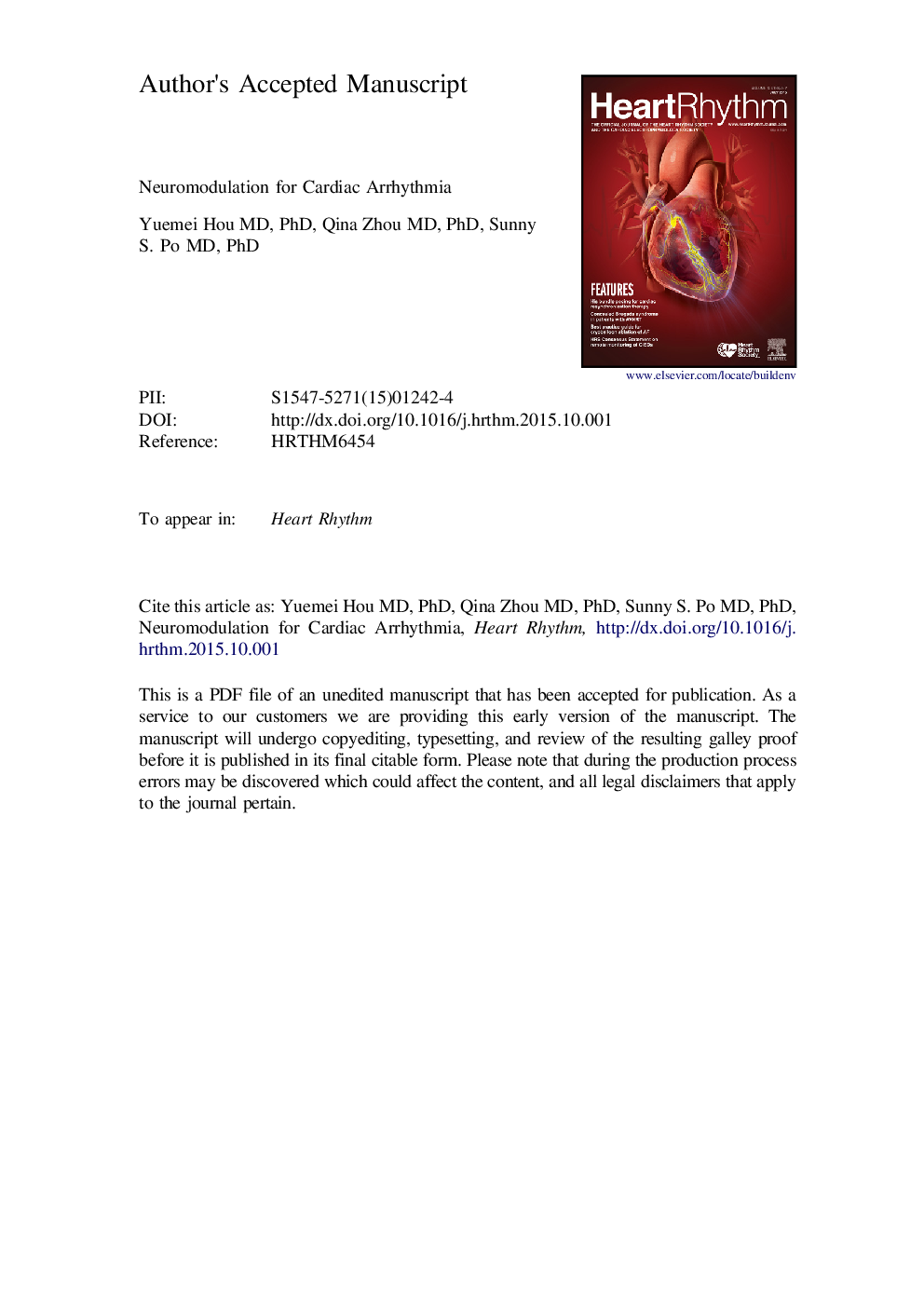| Article ID | Journal | Published Year | Pages | File Type |
|---|---|---|---|---|
| 5959403 | Heart Rhythm | 2016 | 28 Pages |
Abstract
The autonomic nervous system is known to play a significant role in the genesis and maintenance of arrhythmias. Neuromodulation, mostly designed to increase the parasympathetic tone and suppress the sympathetic tone, has become an emerging therapeutic strategy for the treatment of arrhythmias. Emerging therapeutic approaches include cervical vagal stimulation, transcutaneous auricular vagal stimulation, baroreceptor activation therapy spinal cord stimulation, ganglionated plexi ablation, renal sympathetic denervation, and left cardiac sympathetic denervation.
Keywords
VNSLSGCPVTLQTSPVIautonomic denervationBATLCSDSCsRSDGanglionated plexiVT/VFArrhythmiaMyocardial infarctionPulmonary vein isolationrenal sympathetic denervationERPLeft ventricularCatecholaminergic polymorphic ventricular tachycardiaSpinal cord stimulationvagus nerve stimulationAutonomic nervous systemAtrioventriculareffective refractory periodpulmonary veinANSVentricular fibrillationAtrial fibrillationNeuromodulationLeft cardiac sympathetic denervationleft stellate ganglion
Related Topics
Health Sciences
Medicine and Dentistry
Cardiology and Cardiovascular Medicine
Authors
Yuemei MD, PhD, Qina MD, PhD, Sunny S. MD, PhD, FHRS,
